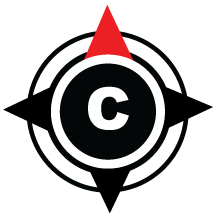“Failing to prepare is preparing to fail,” John Wooden.
Campaign management is one of the biggest differences between an entry level sales rep who focuses on single game buyers to a mid-level account executive with a more diverse pipeline. For sellers who primarily focus on B2C (or past single game buyers) it is often one type of script with a similar touchpoint process regardless of the time of year. When a rep shifts their focus to not only include B2C, but now B2B, maybe non-renewed buyers, and dabble in a few renewal calls (just to name a few), suddenly everything changes. For the first time the rep must proactively think ahead and plan their upcoming campaigns.
80/20 Rule
It’s vital to spend 80% of your time on the most important 20% of your pipeline. Typically, that 20% is geared towards the customers who spend the most money with your organization. Other times, that 20% might be vital stakeholders in the decision-making process or a key source for referral business. In whatever way you define that 20%, spend your time and energy there. I’ve seen reps who have 300 leads in their pipeline, they start with customer #1, and one a time they work their way down their pipeline until they reach customer #300, at which point they go back to the top of their list and start the entire process all over again. Time is money and most of your time should be spent with the customers spending it or with the customers who have the potential to spend it. All your customers should be treated fairly, but it’s not rational to think each of them will be treated equally.
Diversify Your Focus
Reps that tend to have the most consistent success are those who don’t put all their eggs in one basket. It’s important to make sure your pipeline is filled with different types of campaigns and different types of customers. Lead sources and success rates change from one year to the next and therefore you should not be dependent on any one source. Just because your largest customer came back last year, doesn’t mean they are coming back this year. Just because a group program produced 500 tickets last year, doesn’t mean it can’t take a nosedive this year. Just because you drove a ton of revenue on the inbound line, doesn’t mean the phone will be ringing off the hook next year. At any moment in time you need to be prepared for a revenue stream to disappear. Reps who focus on diversifying their pipeline have another revenue stream ready to go. Control the areas of the business you can control.
Create a Systematic Process
There is a time to think, and there is a time to do. When it comes to innovation and areas of improvement it’s often important to take a step a step back and look the situation from a 30,000-foot level. When it comes to the everyday (and often mundane) tasks, it’s often just about putting your head down and getting to work. Your businesses CRM system is your best friend, and yet reps often over complicate their system for corresponding with customers. First off, ensure that your to-do list each day is manageable. One of the leading causes of feeling overwhelmed in CRM is because you have more customers to call per day than you can physically manage. Basic rule of thumb, make your follow ups mandatory not arbitrary. Ask yourself the question, “Do I absolutely need to follow up this person today?” Secondarily, your CRM system is filled with filters and fields to make your job easy. Work on building good habits early on because changing your process later in the game isn’t easy.
Matt
Matt Clark is the Director of Group Tickets and Hospitality at the San Diego Padres. He's been in sports business for 9 years. He started his career with the San Antonio Spurs, then moved on to the Cleveland Indians before landing at the Padres, where he's been for the past 6 seasons. He's grown from an entry level salesperson in sports to an emerging leader in our business. He's very gracious with his time and has a passion to help develop others. He's a mentor in theClubhouse and if you'd like to connect with Matt you can set up a call with him here

